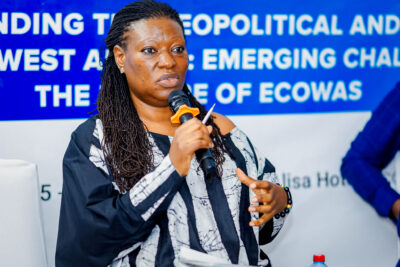 The problem with the history of toleration is not that no one is studying it. There is now a rapidly growing number of books and articles approaching the topic from a number of angles and in several different countries. The problem is that we assume that all of those studying toleration are studying the same thing. Though in fact we are describing a diversity of arrangements, dynamics, and possibilities taking place in different societies at different times, we still write and think as if there were a single proper form of toleration to which all others should adhere, or an ideal like “religious freedom” to which all should aspire. One symptom of this tendency is the regularity with which various manifestations of toleration are described as somehow incomplete or lacking or, worse, actually a form of intolerance rather than tolerance. Along with this tendency come repeated efforts to define “tolerance,” “toleration,” religious liberty, or religious freedom, but upon closer inspection, the definitions often do not match up: a clear indication that there is not yet an agreement on exactly what we are talking about after all.
The problem with the history of toleration is not that no one is studying it. There is now a rapidly growing number of books and articles approaching the topic from a number of angles and in several different countries. The problem is that we assume that all of those studying toleration are studying the same thing. Though in fact we are describing a diversity of arrangements, dynamics, and possibilities taking place in different societies at different times, we still write and think as if there were a single proper form of toleration to which all others should adhere, or an ideal like “religious freedom” to which all should aspire. One symptom of this tendency is the regularity with which various manifestations of toleration are described as somehow incomplete or lacking or, worse, actually a form of intolerance rather than tolerance. Along with this tendency come repeated efforts to define “tolerance,” “toleration,” religious liberty, or religious freedom, but upon closer inspection, the definitions often do not match up: a clear indication that there is not yet an agreement on exactly what we are talking about after all.
Evaluating the resulting history in any sort of objective manner is perplexingly difficult, for the history of toleration, like toleration itself, is a deeply partisan phenomenon. Far from being a stable category or experience, toleration is fundamentally a relationship, and inherently an ongoing, ever-evolving relationship, the content of which varies significantly depending on the parties involved. For example, one can say that there was toleration in the Ottoman Empire as well as the British Empire, but one bolstered a form of rule dominated by Muslims, while the latter did the same for Anglicans. Each group lived in a situation of tolerance, but would have found itself living in very altered circumstances in the other’s system. Does that make one or the other less tolerant?
The tendency to see toleration in singular fashion—as “the idea of toleration” (for example in Perez Zagorin, How the Idea of Religious Toleration came to the West) or a distinguishing feature of, say, Dutch, British, or American history—obscures the partisan dimension of toleration. We continue to take a single manifestation or interpretation of toleration (most popularly, in theories of liberalism, that of John Locke) as representative of the whole rather than as what it is: merely one manifestation among many. In the case of Locke and the Anglo-American world it is, of course, a highly influential version of toleration. However, to assume that it is then a universal model by which all others, past and present, can and should be evaluated is to confuse the general with the particular: the main problem with the history of toleration I am highlighting here.
Another indication of the partisan dynamic unwittingly preserved in the history of toleration is the tendency to look for a person or place that best embodies the ideal of toleration. Here too, one’s answer depends on one’s predilections. Was it the era of convivencia in Medieval Spain? The Dutch Republic? Sixteenth-century Poland-Lithuania? France under the Edict of Nantes? Britain after the Glorious Revolution? Pennsylvania? Mughal India? Roger Williams? Sebastien Castellio? Erasmus? Pierre Bayle? Baruch Spinoza? The predominance of early modern European history and Protestant thinkers in the scholarship on the history of toleration betrays its close alliance to the history of the rise of Protestantism as well as the rise to global dominance of Europe and the United States. Indeed, into the twentieth century many thinkers made little distinction between the two.
Traditionally, Roman Catholicism has played the role of great antagonist in such histories of toleration. Indeed, many of the earliest histories of the rise of toleration were crafted as denunciatory histories of the Inquisition. Roman Catholics have tended to embrace the cause of religious toleration (or, nowadays, religious freedom) only when they have been a minority faith: Elizabethan England, for example, or colonial Maryland. One need not hold this as a reproach against Catholics, for many of the great advocates of religious toleration have been belonged to a minority faith agitating for greater rights and recognition: Jews and Quakers in Cromwellian England; Lutherans in the Dutch Republic; Baptists most anywhere before the nineteenth century.
One of the great transitions between the early modern and the modern period is the role that toleration, or religious freedom, has come to play in various groups’ battles for wider recognition, acceptance, or power. In the earlier period, it was rare for someone to argue in favor of toleration or religious liberty per se, without attaching it to the cause of a particular group. At the same time, when an individual did do so, such as Baptists or Separatists who regularly spoke in favor of toleration of Jews, Muslims, and a variety of Christians, it clearly fit their partisan needs as members of a group that either had given up pretensions towards universal appeal or, in the case of the early Quakers, were convinced of the persuasive power of their message in any situation free of constraint. Likewise, when members of a Protestant establishment, such as Hugo Grotius or William Chillingworth, spoke up in favor of tolerating a variety of opinions, it was also with the assumption that eventually the variety of opinions would coalesce around the truth, which they never doubted resided more in their official church than any other.
Ever since the Age of Revolutions in the late eighteenth century, figures have increasingly spoken out in favor of religious tolerance and freedom per se. However, here too one can easily detect a partisan dimension. American Protestants did not fervently advocate religious freedom in the nineteenth century because they anticipated the flourishing of Buddhism in the United States but rather because it helped to justify the predominance of Protestants in a nation without an established church and a growing Roman Catholic minority. Likewise, Roman Catholics have not now embraced the cause of religious freedom because they believe it will diminish their position within the United States. None of this is pointed out in an effort to discredit or demean the various advocates of religious liberty. It is simply to point out that they are not all advancing the same cause, their use of similar terminology notwithstanding. The struggle over religious freedom today has significantly different connotations than it did in 1780s Virginia or 1650s England or 1520s Saxony.
By treating toleration as a distinct, identifiable phenomenon rather than a problem that needs to be explained, we are in danger of depriving toleration of any analytical power while preserving it as the polemical tool that it has always been. My point is not to say that others have it wrong and I (or some particular philosopher) have “it” right. Rather, it is to just emphasize how unstable a category toleration is. And that should not be surprising given the relational nature of toleration. I doubt if there ever can be a situation in which what is really at stake is an abstract quality that stands above the constituent parties. That would simply be a different twist to the relationship (like the self-proclaimed secular state in India or Turkey or France). To deploy the term tolerance without specifying the context and make-up of the toleration in question is simply to adopt and champion a particular partisan stance, often one with deep roots in European history. It is not to employ a powerful, never mind objective, category of analysis.
The partisan dimension of religious tolerance need not be read as a sign of hypocrisy or a fatal flaw in thinking. Rather, it should be accepted as inherent in the topic of toleration itself. For toleration, however described, whether as an ideal state of being, or religious freedom, religious liberty, secularism, or pluralism, is not an objective status or transcendent condition. Toleration is a relationship—and a deeply, inescapably partisan one, for it involves a relationship between two or more different parties, none of whom will all be equally satisfied with whatever their particular relationship happens to be at a given moment. It is extremely difficult if not downright impossible to write a history of toleration that is not partisan. The least we can do, I would suggest, is be honest and open about this difficulty.
There is, of course, a history of toleration out there. Anyone can immediately conjure up certain associations and images when that phrase is invoked. However, exactly what comes to mind would, I am certain, vary significantly depending on the mind in question. Is it the struggle of Jews for recognition in Pieter Stuyvesant’s New Amsterdam? Of Catholics in Ireland? Of Mennonites in Switzerland? Remonstrants in the Dutch Republic? Greek Orthodox in the Ottoman Empire? Episcopalians in Scotland? Muslims in English Tangiers? Hindus in Portuguese Goa? Or Dutch Protestants in Japan? And so on. Is it really our job to champion one narrative over the other?
Rather than evaluate the relations (some more fraught than others) between different religious groups along a presumed universal scale of tolerance, we should focus on the specifics of the situation at hand. Once we can appreciate how the “rise” of tolerance in a particular place, such as Ireland, would affect the relationship between the various groups involved (in this case, a demographic majority of Roman Catholics versus smaller populations of various Protestants, including Presbyterians, Baptists, Quakers, and the Church of Ireland—but not, before the nineteenth century, Jews, Muslims, or other non-Christians), then we can embark on a fuller discussion of what it is we are talking about when we talk about religious freedom (as Saba Mahmood suggests with regard to the Middle East).
The challenge for today’s world, in which global awareness and implications are unavoidable in a way they were not in the sixteenth century, is to come up with a method to approach the history of toleration that can capture its perpetual, ongoing, and, I would say, never-ending nature. However widespread and powerful religious unity and conformity was in medieval Europe, one can still find exceptions—bits of diversity that kept questions of toleration alive long before the appearance of Protestants. And if one goes back further, to the late Antique period, then one returns to a world of religious diversity in which the Roman Catholic Church was but one of many contenders (indeed for the fervently Christian Roger Williams everything went downhill once the emperor Constantine converted and fused his church with his empire). Toleration in some form or another has been around for a long time. It will not go away, though it will change. We need to move away from models of rise and fall, progress and decline, and towards a way to capture the perpetual motion machine that tolerance really is. Only then will the ideas of long-gone Protestants retain relevance in a world where it is now Catholics who are taking the lead as advocates of religious freedom.













Indeed and well put: toleration is a relational concept. Or: “It takes two to tolerate” and these two do not need to accept each others worldviews, they only need to coexist. The proof of the pudding of the concept of toleration is not theoretical, but practical. This ‘down-to-earth’ approach is characteristic of Benjamin Kaplan’s refreshing sketch and analysis of the history of religious tolerance in early modern Europe: Divided by Faith: Religious Conflict and the Practice of Toleration in Early Modern Europe ( Cambridge, MA : Harvard U.P., 2007). In this groundbreaking study he questions the standard narrative of a confessionally divided Europe which only after 1650 slowly enters the Age of Enlightenment, where Reason finally can put an end to confessional fanaticism. Kaplan quite convincingly shows that this narrative does not reflect what really happened between people in Europe, real people, of flesh and blood, trying to live together. This evolutionary view is a plain myth. Instead Kaplan writes a history of toleration ‘from below’. He points out that religious coexistence took many different forms in early modern Europe. People, living together, had to negotiate the consequences of religious disunity in their own communities, which were in no way so homogeneous as superficial historiography often suggests. As a result real toleration does not require a ‘principle of mutual acceptance’, let alone that one has to ‘embrace diversity for its own sake’, as is quite a common supposition in modern concepts of tolerance presumes. Instead, he seeks to map the way people of different faiths lived together and invented strategies to survive together: ‘live and let live’. This down-to-earth approach might well be more adequate in our days than highbrow idealist theories, which ask too much of ordinary human beings.
I think that Haefeli brings up a very interesting topic. Regardless of how toleration is defined, in my mind it has always implied a negative connotation in addition to a power dynamic between two or more groups. When I hear toleration being spoken about, whether it be for religion, a person’s sexual orientation, or any other type of social identification or behavior, it seems to me that whatever might be considered out of the ordinary, is simply being permitted by the majority group. This seems especially problematic when it comes to certain religious groups tolerating one another because of how integral religion is to its respective believers.
Haefeli goes through much history describing different instances of religious toleration between groups and looking at the case of America, then and now, it is interesting how the behaviors of the Catholics and Protestants have changed over time. Protestantism within the US has always held the majority by a long shot, ever since the country was founded. In this way, Protestantism has held power over not only Catholics, but also religions like Buddhism, Hinduism, and Islam. For Catholics, this seems not to be the worst deal, especially in today’s age. It is tolerated quite easily. But, for other non-Christian religions, this is not always the case. Since the terrorist attacks more than a decade ago up until the Boston Marathon bombings more recently, Protestants, and Christians in general, have seen their tolerance vary for Muslims. This points back towards the idea of freedom of religion mentioned earlier in the article. As Haefeli points out, there is no set definition for such things. Under the law, everyone is allowed to practice his or her own religion. But in practice, it works out differently for a Protestant than it does a Muslim. Society doesn’t respond as well to hearing that someone is going to a mosque rather than a church. I personally have never seen or heard of a Muslim politician and the idea of a Muslim presidential candidate seems as laughable as a Catholic one was a half century ago. The idea seems to strike fear into the general public’s hearts. In a country with a stronger sense of religious pluralism, these ideas might seem more foreign. But, since the US has always been majority Protestant, other religions do not wield the same amount of power.
I agree with the stance that toleration should be viewed more more critically than the current attitude towards it. As mentioned, the idea of “toleration” has been muted into a phenomenon, an admirable fact and something to strive for. This is an incredibly superficial idea of toleration. As Haefeli states, calling toleration a “distinct, identifiable phenomenon rather than a problem” erases the potential for the critical thought it desperately needs. The word “tolerate” has always struck me as deeply pejorative, a problematic term if one is striving towards any sort of equality or diplomacy. Imagine someone saying, “oh yes, I tolerate that person.” To tolerate, by definition, means to allow existence, to accept or endure something unpleasant. The connotations of language are of course constantly changing in popular culture, but to state you tolerate someone or something just has the image of a sneer behind it. As it stands, society sees “religious toleration” as an equivalent to “religious acceptance,” and really I couldn’t see any more differences between the two if I tried. Toleration has an inherent ethnocentricity and a power dynamic about it, with one person doing the tolerating and the other, lesser power at their mercy. To look critically at this idea, I agree with Haefeli in that there needs to be a “method to approach the history of toleration that can capture its perpetual, ongoing, and, I would say, never-ending nature.” I also think we could benefit from finding a different word when presenting the idea, but that’s a linguistic argument for another day.